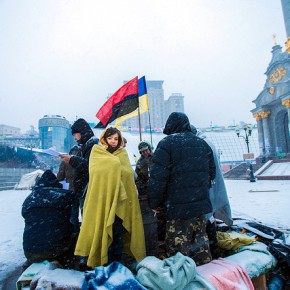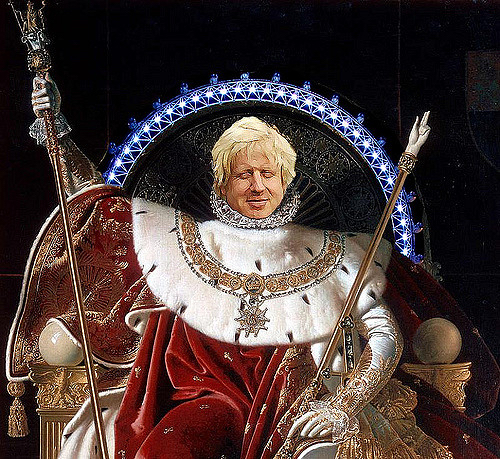Pakistan has no shortage of divisive leaders, but the most controversial is General Zia ul-Haq. Although he presided over a decade of relative stability and prosperity, the late President is frequently criticized for allowing an aggressively conservative Islamism to take center-stage in Pakistani society. This is in addition to weakening Pakistani democratic institutions through his 1977 coup d’etat, and extending military control in many areas of society.
Zia ul-Haq based his regime’s legitimacy on two forms of fundamentalism that neatly complemented one another. Right-wing Islamism, and corporate militarism, were the essence of his rule.
It’s crucial to understand the type of religion that Zia practiced. Left-wing Pakistanis often argue that Zia ul-Haq deployed Islam (specifically Wahhabi Salafism) cynically in order to secure his power. This is true, though it was a bit more subtle than that.
Islam was argued to be the best means for protecting Pakistani society (even though it was already highly religious) and Zia advertised himself as delivering on his social responsibilities by acting on behalf of it. Pakistan needed Islam to be institutionalized, and for that to happen, it needed Zia to realize it in state governance. Ul-Haq claimed that he was only giving the public what it wanted, and desperately needed.
Zia outlined his plan for moving Pakistan towards becoming a “true Islamic Republic” through a platform known as Islamization. Beyond the obvious aims of adding spiritual legitimacy to his rule, and especially his economic program, it is likely that Islamization was also quite personal for him. The general was a diehard religious conservative, and eager to see hardline Islam widely practiced in the country.
The rhetorical function that Islamization served under Zia’s leadership was made obvious during a 1979 interview, in which he fiercely criticized the social democrat he deposed, Zulfikar Ali Bhutto:
“Mr. Bhutto’s way of flourishing way of Pakistani was by eroding its moral fiber. Mr. Bhutto eroded the moral fibre of the society by pitching students against teachers, children against their parents, landlord against tenants, workers against mill owners. Pakistan is not incapable of economic production. It is because Pakistanis have been made to believe that one can earn without working. We are going back to Islam not by choice but by the force of circumstances.“
Student and peasant movements, labour organizations, and inter-generational clashes are all referred to by Zia, as proof that Pakistan requires a strong-handed revival of values. This type of rhetoric is tried and tested. It offers vague details about a crumbling social structure, and then argues that its strength can be restored by falling back on something older: Islam.
With Islamization, all Zia ul-Haq really accomplished was to find a Pakistani way of arguing that the left was ruining society. Needless to say, his efforts were extremely successful, and inspired a legion of supporters. Islamization worked, because it tapped into a feeling of national weakness that was fueled by economic stagnation, a fractured social fabric, and fresh wounds from the humiliating 1971 war of Bangladeshi independence.

Still, it was nothing new. Zia’s era saw the rise of many similarly-minded conservatives, making the exact same sorts of arguments, both in the Islamic world, and in the West. It is no wonder that he carried so much favor abroad. Ronald Reagan, Margaret Thatcher, Kings Khalid and Fahd ibn Saud, and even Ayatollah Khomeini were all nominal allies. His rule was a Pakistani articulation of their general worldview, and this added to his domestic legitimacy.
Ul-Haq’s economic policies, though conservative, were not strictly Thatcherite. In Pakistan, although conventional wisdom has it that Zia reacted to Zulfikar Ali Bhutto‘s failed nationalization initiatives by re-privatizing industry and education, this isn’t in fact what happened. Large-scale privatization only started to be explored in 1987, and didn’t become widespread until after his death, in 1988.
Rather, ul-Haq’s initiatives took such forms as “Islamizing” the economy, by instituting an interest-free economic cycle. Still, many industries weren’t returned to their previous owners. Instead, Zia relied on Pakistan’s armed forces to ensure maximum efficiency. In a manner not too dissimilar to China, the military kept an iron grip on much of the country’s economic activities, controlling both the public and private sectors.
Much of the support that ul-Haq extended was logistical, as the military proved itself the most efficient national institution in Pakistan. However, it was frequently more bloody than that. For instance, striking workers could expect to be met by armed soldiers, and often, many deaths. Zia also re-positioned Pakistan as an important anti-Soviet force in South Asia, resulting in a purge of leftists within the country’s Punjabi and Sindhi heartland, as well as increased support for far-right elements of the Afghan mujahideen.
Ul-Haq reinforced the latter push with a successful transformation of the country’s independence-minded frontier into hotbeds of Salafi jihadism, focused on fighting in the Afghan civil war. This was done through a variety of methods, such as supporting early Salafi jihadist factions, tripling the country’s madrassahs with an emphasis on Salafi education, establishing state sponsorship of madrassahs for the first time, and encouraging a growth of Saudi religious influence in areas like Balochistan and the Northwestern Frontier Province.
While many of these policy choices had long-term consequences for terrorism, at the time, they strengthened Zia ul-Haq’s religious clout while also ensuring that the Pakistani economy could be kicked into overdrive without disruptions. As a result, it prospered. Between 1977 and 1986, the years of Zia’s military-corporatism, Pakistan’s GNP grew by an average of 6.8% annually.

This was one of the highest GNPs in the world at the time, and was substantially driven by enthusiastic Western governments and investors. Unsurprisingly, this growth made Zia very popular among Pakistan’s feudal and industrial elites, including the current Prime Minister, billionaire mogul Nawaz Sharif. These dramatic economic gains also went a long way towards cementing support for military rule in the general population.
Pakistani critics of Zia ul-Haq often describe a “long shadow” that he has left over the country. This is more an ideological observation than it is an economic one. It reflects a recognition of the fact that the political processes Zia set in motion need to be fundamentally altered if Pakistan is to ever become a reliably democratic state. The military, for example, needs to fully divest itself from politics, as well as from the economy, and the public sphere requires a degree of secularization.
The religious element of democratization cannot be over-emphasized. Far-right Islamists have a disproportional say in Pakistan’s affairs. Coupled with Zia’s Salafization of the frontier, their promotion has resulted in many of the region’s current problems with terrorism. The myths about free enterprise that are linked to his rule have similarly resulted in high levels of inequality, which continue to inhibit necessary economic reforms.The combination of legacies is deadly.
Zia ul-Haq implemented such initiatives because he believed that it would bolster the military’s legitimacy in running Pakistan. Unfortunately, it worked. The general fundamentally altered the trajectory of civilian governance in the country, and weakened democratic institutions to such an extent that many Pakistanis are currently awaiting the next coup d’etat.
It is very unlikely that Pervez Musharraf, and military leaders like him, would enjoy nearly the same amount of popularity if they weren’t inheritors of Zia’s legacy. Although Pakistan has recently had its first transfer of power between two democratic parties, the legacy of military governance remains a pressing problem. It’s difficult to speculate whether or not things would have turned out differently without Zia ul-Haq. However, Pakistan would certainly benefit from his influence waning.
Unfortunately, there is no neat period of Pakistani history that can be neatly sectioned off as “The ul-Haq Era.” Twenty-six years after his death, Pakistan is still living in that period. The long shadow lingers on. The country remains, for lack of a better name, Zia Land.
Photographs courtesy of Satbir Singh, junairdrao, and John Milton. Published under a Creative Commons License.





